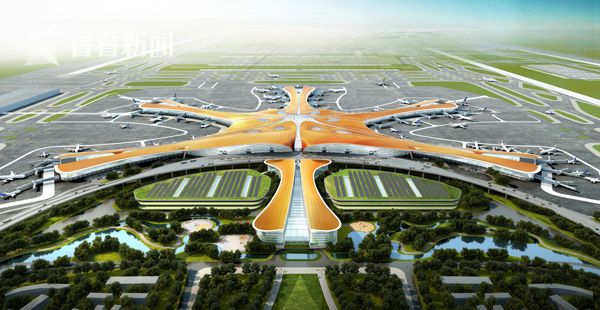It won’t be open for another three years, but Beijing’s new airport is shaping up to be the world’s largest.
The airport’s design was revealed last week by Zhu Wenxin of the airport’s construction team. Measuring 1,144 meters in length from east to west, and 996 meters from north to south, the six-pointed, starfish-shaped airport will serve as a transportation hub that includes facilities for air travel, high-speed rail, subway, buses, expressways, and an inter-airport transportation system.
The airport will serve passengers with 78 gates over two floors, the top designated for international flights and the bottom for domestic. The airport will feature five airside concourses, one central hall and a hotel.
A rapid transit line will connect the new airport with Beijing South Railway Station, allowing passengers to travel between the two destinations in just 30 minutes.
Passengers arriving by train will enter the airport from below, through the 340 square meter transport center. Instead of going through the above domestic arrival hall, they can enter the airport through the transport center’s security checkpoint.
A 13,000 square meter commercial district will be built at the center of the six arms of the “starfish” construct.
All flights from Beijing Nanyuan Airport will be diverted to this new airport, which has yet to be officially named.
The new Beijing Airport is 46 kilometers south of the capital, further than the current Beijing Capital International Airport in the northeast.
This past August, the Civil Aviation Administration of China (CAAC) announced that China Eastern and China Southern Airlines would relocate from Beijing Capital International Airport to the new airport where they would exclusively offer their services.
Citing a rise in air travel which saw Chinese take 4 billion domestic trips and over 100 million international trips last year, the CAAC plans to not only increase the number of airports but also the number of domestic and international routes.
Guangzhou Baiyun Airport is expected to open a new passenger terminal and transportation center with a rapid transit link in 2018. Meanwhile, Chengdu has scaled back plans for its $11 billion airport.

